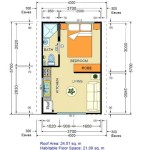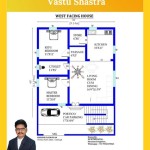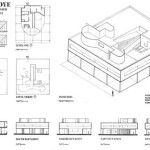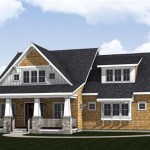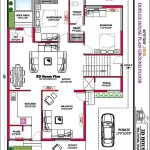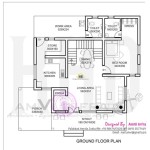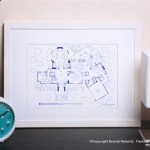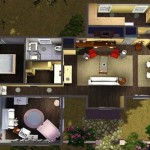3D House Designs and Floor Plans: A Comprehensive Guide
In the realm of architecture and design, 3D house designs and floor plans have become indispensable tools for visualizing and conceptualizing residential spaces. They provide a comprehensive and immersive experience, allowing both architects and clients to navigate, explore, and modify designs before construction commences. This guide will delve into the intricacies of 3D house designs and floor plans, exploring their significance, benefits, and key considerations.
The Significance of 3D House Designs and Floor Plans
3D house designs and floor plans offer a multitude of advantages, transforming the traditional blueprint into a dynamic and interactive representation of the intended dwelling. Key benefits include:
- Enhanced Visualization: 3D models provide a realistic and detailed view of the house's exterior and interior, enabling clients to understand the overall layout, room proportions, and flow of spaces. This visual clarity fosters better communication between architects and clients, minimizing misunderstandings and ensuring a shared vision.
- Early Problem Identification: By visualizing the design in 3D, designers can identify potential issues such as awkward spaces, inadequate lighting, or conflicting furniture placements at an early stage. This proactive approach allows for timely adjustments and optimization before construction, saving time, money, and effort.
- Informed Decision-Making: 3D models empower clients to make informed decisions regarding materials, finishes, and design elements. They can visualize the impact of different choices, such as the color palette, flooring options, and furniture arrangements, and select options that align with their preferences and budget. This process promotes client satisfaction and ensures that the final product meets their expectations.
- Increased Efficiency: 3D house designs and floor plans streamline the design process, enabling faster iteration and refinement of ideas. They reduce the need for multiple physical blueprints and facilitate efficient communication and collaboration between architects, clients, and contractors.
Key Considerations for Creating Effective 3D House Designs and Floor Plans
Creating successful 3D house designs and floor plans requires careful consideration of several key factors:
- Software and Tools: A range of software programs, such as Revit, SketchUp, and 3ds Max, are available for 3D modeling. The choice of software depends on the complexity of the project, the designer's experience, and the desired level of detail. It's crucial to select software that offers a user-friendly interface and a wide range of modeling and rendering tools.
- Design Principles: Effective 3D models adhere to established design principles, such as balance, proportion, and functionality. The design should reflect the client's needs and preferences while considering factors such as natural light, ventilation, and accessibility. Architects should strive for a harmonious blend of aesthetics and practicality.
- Scale and Detail: The level of detail in 3D models can vary depending on the purpose. For preliminary designs, basic shapes and outlines may suffice. However, for construction purposes, detailed models with accurate measurements and materials are essential to ensure smooth and precise execution.
- Collaboration and Communication: Open communication and effective collaboration between the architect and client are paramount. The architect should actively listen to the client's vision and translate their ideas into a comprehensive 3D model. Regular feedback and adjustments are crucial to ensure alignment and satisfaction.
Types of 3D House Designs and Floor Plans
3D house designs and floor plans encompass a diverse range of styles and approaches, depending on the project's scope and purpose. Some common types include:
- Preliminary Designs: These models provide a general overview of the house's layout and exterior, offering a basic understanding of the intended design. They are often used in the initial stages of the design process for concept exploration and client feedback.
- Construction Drawings: Construction drawings are highly detailed models that provide all the necessary information for building the house. They include elevations, sections, and floor plans with precise measurements, material specifications, and construction details.
- Interior Design Models: Focusing on the interior spaces, these models showcase furniture arrangements, colour palettes, and decorative elements. They allow clients to visualize the ambiance and functionality of different rooms, fostering a sense of connection and personalizing the design.
- Virtual Tours: Virtual tours offer an immersive experience, allowing clients to virtually walk through the house, explore different rooms, and interact with the environment. These tours provide a realistic and engaging way to experience the design and make informed decisions.
By leveraging the power of 3D technology, architects and clients can collaborate effectively, visualize designs realistically, and make informed decisions about their future homes. 3D house designs and floor plans are essential tools for transforming dreams into tangible spaces that reflect the unique preferences and aspirations of their occupants.

How Much Do 3d House Plans Cost Faqs Answered Cedreo

Benefits Of Using 3d House Floor Plan Design

How Do You Make A 3d Floor Plan

3d Floor Plans Renderings Visualizations Fast Delivery

How Much Do 3d House Plans Cost Faqs Answered Cedreo

1000 3d Floor Plans And Home Design Ideas To Build Free Plan House Imagination Shaper

3d Floor Plans

What Is 3d Floor Plan How To Make It Benefits Cost

180 3d House Plans Floor Ideas

Everything You Need To Know About 3d Floor Plans

